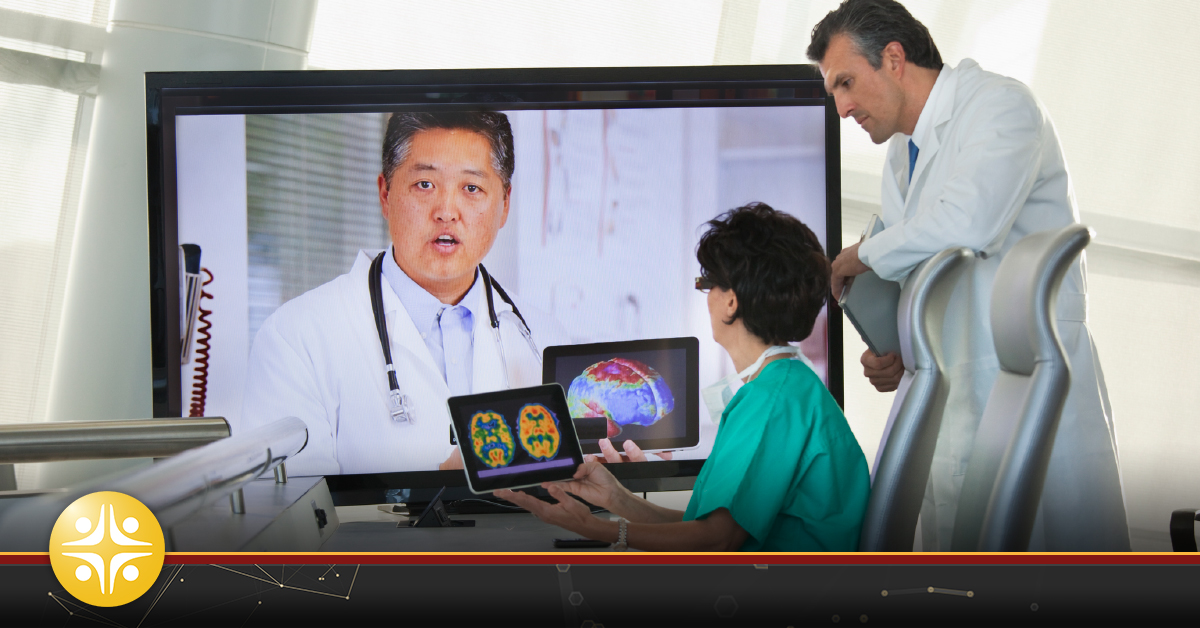Telehealth Doesn’t Have to Be Cross Country: How Hospitals Are Adapting Amid COVID-19
Rebecca Hayward

The COVID-19 pandemic has changed our world in myriad ways—possibly forever. Many companies have found ways to adapt to the pandemic, as workers are forced to stay home, and business, as usual, is disrupted.
The chances are high that the coronavirus will also change how you see your doctor in the future.
Telehealth has turned into a hero in the fight against COVID-19. The virtual visit has surged in popularity so much that it’s likely your next healthcare visit will be through a computer screen.
Here’s how hospitals are using the virtual healthcare visit to cope with the coronavirus and why this technology-driven technique seems to be working.
CDC Encourages Hospitals to Increase Telemedicine Usage
The U.S. Centers for Disease Control and Prevention (CDC) now recommends that clinical providers leverage telehealth tools to help slow the spread of COVID-19. The World Health Organization (WHO) recommends the use of telehealth technology to strengthen the response of healthcare organizations fighting the disease. The Centers for Medicare and Medicaid Services (CMS) even just lifted payment restrictions that had created roadblocks for providers considering the use of telehealth services.
Telehealth, telemedicine, eHealth, or mHealth, all refer to the practice of providing medical care through a computer and the Internet. No matter the digital device, whether it’s a smartphone or a desktop, a clinician can conduct a virtual house call with a patient no matter where they are located.
As a tool, telehealth has been around for five decades, and more than 70% of today’s hospitals already use the technology. Health insurers have jumped on the telehealth bandwagon, working with employers to offer these tools as a lower cost, efficient way to see a doctor from the comfort of your living room. There are dozens of peer-reviewed studies showing the efficacy of telehealth to cut costs, improve efficiency, reduce practice overhead, and improve the quality of care for patients.
But the coronavirus has catapulted telehealth into the national spotlight as an important tool in the fight against COVID-19. Hospitals can triage potential COVID-19 patients before they walk in their ER and spread the disease. Hospitals and medical practices can treat mild cases while keeping patients at home. As a tool, telehealth is making a difference.
Benefits of Telehealth for Flattening the COVID-19 Curve
Telehealth technology is the original social distance tool, allowing clinicians to treat patients remotely without ever coming into close physical proximity. Routine healthcare issues or non-acute patient encounters can all be handled via a videoconference. But during the COVID-19 pandemic, telehealth also has these benefits:
- Hospitals use telehealth services to help cut down on the sick patients flocking to ERs already overwhelmed by ill patients but also the “worried well” seeking coronavirus testing.
- Telehealth can flatten the transmission curve of this virus by allowing remote patients to receive care without coming in contact with others that they may infect—or that may infect them.
- Telehealth can also cut down on unnecessary exposure for clinicians and staff at a time when we need all hands-on deck to handle the influx of patients.
Hospitals using telehealth will be more effective in their efforts to reduce the spread of the virus. It’s an essential tool recognized by many healthcare organizations as crucial in the war against COVID-19.
MedSource Consultants has already taken the necessary steps to go virtual with our interview process, and we are looking to help others do the same. For everyone on the front lines, we must stand apart to come together. Connect with our MedSource Consultants team about some of the options available in the virtual telehealth practice.

